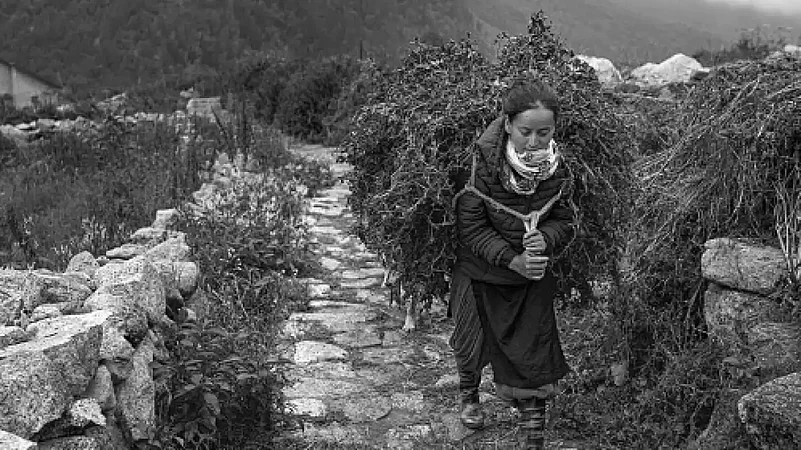Talking about Hindi story writing without mentioning S. R. Harnot’s writings are like visiting Shimla without having a stroll on the Ridge. Having received many literary awards, Harnot’s fame as a story writer of the hilly state of Himachal Pradesh has exceeded the state and national barriers. Many of his stories have been translated into other languages including English, Marathi, Gujarati and even Russian. His stories have become the subject of many research scholars in various universities. Some of his stories have found place in college curricula. Apart from a hundred or so stories penned by him, he has written two novels too.
Though rubbished by the editors in his early years of writing, Harnot took a leaf out of the catalytic lines written to him by the editor of Hindi literary magazine Pehal, by Gyan Ranjan, “Harnot, tumhare paas kachcha mal bahut hai, jahaan se tum lambi Chhalang lagaa sakate ho.” (Harnot, you have plenty of raw material with which you can take a long leap forward). After this, Harnot didn’t look back.

Starting his journey as a story writer with the publication of anthology of stories Panja, he became much recognised with the publication of the stories like Darosh Aabhi, keelen, Billiyan Batiyaatee Hain, Bhagaadevi ka Chayghar. He shot into prominence with the publication of the novel Hidimb. His recently published novel Nadi Rang Jaisi Ladaki has attracted the attention of many literary critics. Talking about the timelessness (universality of time) of stories, a well known critic, Vinod Shahi has reckoned his story Aabhi equaivalent to the Poos ki Raat of Munshi Prem Chand and Dedh Inch Upar of Nirmal Verma.
Of course, Harnot is the writer of hills and the forte of Harnot’s stories and novels is the Himachali social milieu. But let it not be misconstrued that he looks at the mountains as a tourist. Nor is he a romantic writer who rejoices in the beauty of nature. His thematic concerns transcends this romanticism, His depiction of mountains is interwoven with his concern for environmental, social, cultural and political degradation. He is concerned with the harm done to rivers, lakes and mountains in the name of development. He finds something sinister in the invasion of modernity. Including his earlier works, his latest novel Nadi Rang Jaisi Ladaki is a strong voice of his concerns. Harnot is a dalit writer, but not a staunch dalit writer. He does not take an extreme stand. There is no war between upper and lower class in his works. In fact, he takes up cudgel against the exploitation of weaker sections of the society. He is not only aware and sensitive to social vices and human depravities, but also speaks about them without fear. He despises and satirises prevailing evils, and snobbery, His protagonists stand for uncompromising righteousness.
Another distinguishing aspect of Harnot’s writings is that he is a feminist writer. The women in his stories are not weak or fragile. They are strong and struggle against heavy odds. They do not yield to the orthodox social taboos. Be it Sunama of Nadi Rang Jaisi Ladaki or Bhaagadevi of Bhagadevi ka Chayghar, they struggle against the brute and sinister social and political designs. The women characters in Billiyan Batiyaatee Hain and Ma padhti hai, though alone, are not woebegone and depressed. They face life bravely.
Another aspect of Harnot’s stories and fictions is that despite having regional geographical milieu and characters, the issues and concerns have broader and global significance.
















